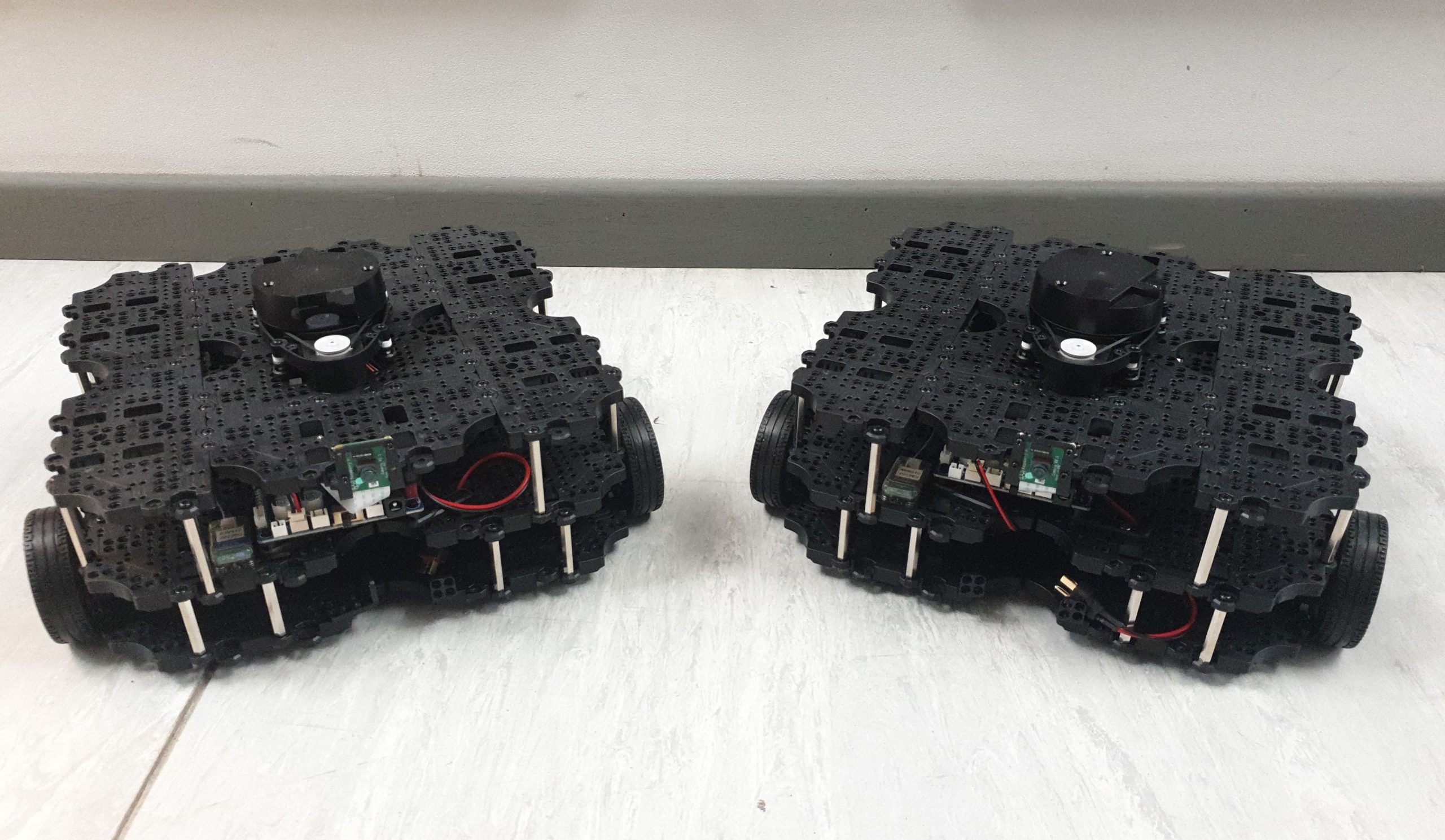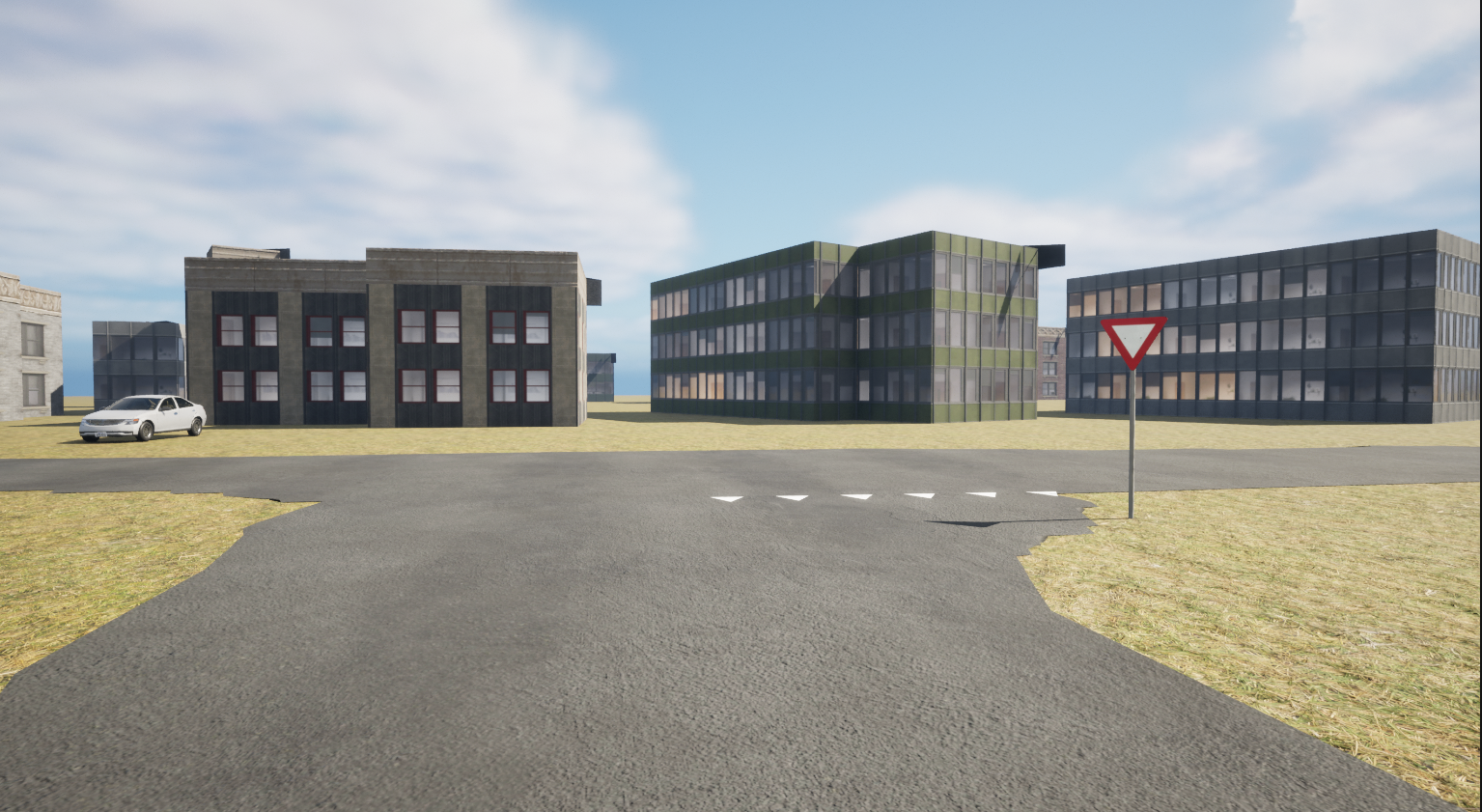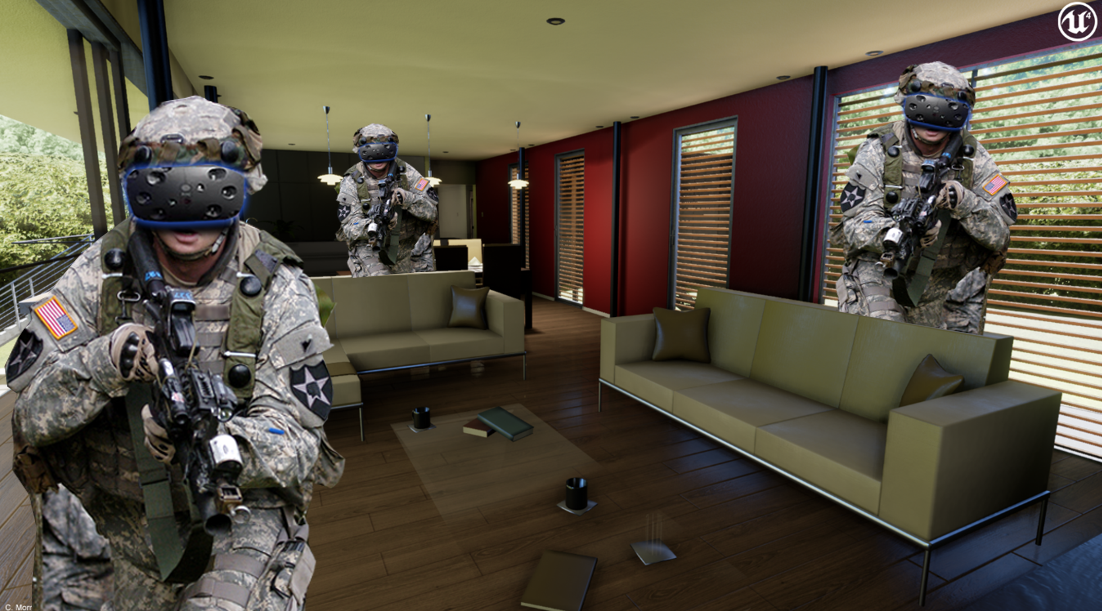By Alex Vanwersch.
In recent years, advancements in robotics and Virtual Reality (VR) technologies have revolutionized
the way we interact with machines and explore our surroundings. The field of robotics has witnessed
significant progress in developing mapping robots capable of navigating complex environments and
acquiring valuable spatial data. At the same time, VR has advanced tremendously, creating immersive
experiences that transport users into virtual worlds.
This research focuses on a VR interface designed for a semi-autonomous mapping robot. The interface
takes advantage of the immersive features of VR to allow users to interact with and explore unknown
environments in real-time. This work is accomplished in the line of work of the xR Lab (Extended Re-
ality Laboratory) of the Royal Military Academy. The VR interface opens new doors in room clearing
and search and rescue applications in hostile or hazardous environments.
In this thesis, the methodology applied to link a Turtlebot3 burger robot with a HTC Vive Focus 3
VR headset is described. Following a series of hypotheses, the mapping, the transmission of informa-
tion between the robot and the VR headset, the generation of a 3D virtual world and the interaction
with it are explained in detail.
In addition to that, a set of tests was performed on the operational and experimental interface. The
results, although qualitative, are predominantly positive and encourage further development of the
tool. As a matter of fact, suggestions from the participants regarding areas of the VR interface that can
be improved and were gathered and are listed in this research.


